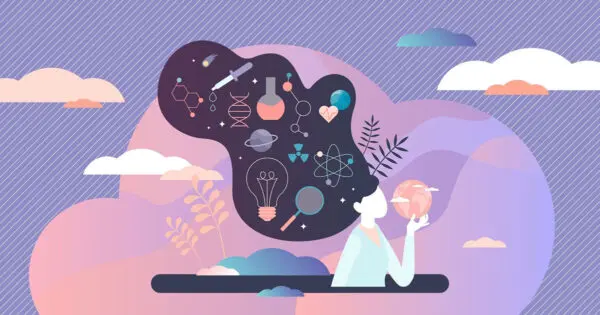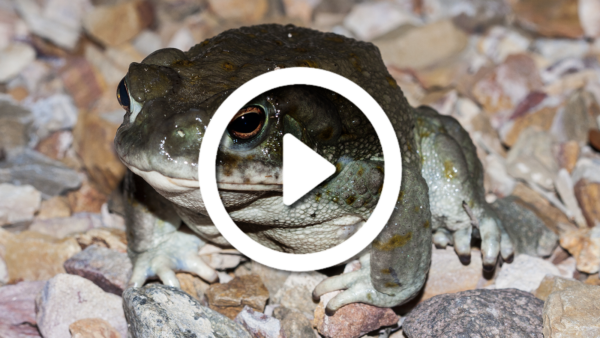What is Psychedelic Therapy?
Psychedelic therapy, or psychedelic-assisted psychotherapy, is a modality that leverages the effects of consciousness-altering substances to accelerate, enhance, and deepen the therapeutic process.
While there are many psychedelic substances with healing potential, the ones most commonly used in therapy are psilocybin, 3,4-methylenedioxymethamphetamine (MDMA), lysergic acid diethylamide (LSD) and ketamine.
Beyond this, some psychedelic medicines are not typically used in traditional therapeutic settings but show clinical efficacy for a myriad of conditions. Among these are Ayahuasca, San Pedro, N,N-Dimethyltryptamine (DMT), 5-methoxy-N,N-dimethyltryptamine (5-MeO-DMT), and ibogaine. In a legal setting, it is less common to see these psychedelics being used as an agent during psychotherapy. However, people may choose to do them on their own, in a group ceremony or at a specialized clinic (in the case of ibogaine), and then process the experience with their therapist. In such cases, individuals do not ingest the psychedelic with their therapist present, but it still falls under the bracket of psychedelic therapy.
Clinical trials have investigated the applicability and efficacy of psychedelic medicine for depression, anxiety, obsessive-compulsive disorder, addiction, PTSD, and easing anxiety for patients with terminal illness. Both MDMA and Psilocybin assisted psychotherapy have been granted breakthrough therapy status, a designation that expedites the process toward legalization and allows the FDA to assist researchers in the development of a promising treatment for a serious condition. The results are limited, and some researchers say that they are cautiously optimistic.
The History of Psychedelic Therapy
Psychedelics were introduced to mainstream science in the 1940s and 1950s. After researchers studied them and, in some cases, self experimented, it was determined that psychedelics were more or less physically safe, and so they were introduced into therapeutic contexts. Humphrey Osmond, the British psychiatrist who coined the term “psychedelic” in the 1950s, found tremendous improvement in patients with alcoholism after a single LSD session.
Grinspoon and Balakar have noted that the scientists studying psychedelics were not considered counter-cultural or radical in their beliefs. Before the Controlled Substances Act (CSA) rendered psychedelics such as LSD illegal in 1970, over 40,000 patients experienced psychedelic therapy sessions that were documented in over a thousand clinical papers. A number of books were published, and six international conferences were held on psychedelic therapy. Despite evidence of their efficacy, Nixon issued the CSA which defined LSD, psilocybin and other psychedelics as having “significant potential for abuse and dependence” and “no recognized medicinal value.” After the fact, it became known that this was a politically motivated move.
MDMA was first synthesized by Alexander Shulgin, a chemist who created over 60 novel psychotropic compounds. Some of Shulgin’s creations were excellent adjuncts to psychotherapy. MDMA was first used to assist in couple’s therapy.
Although psychedelic research came to a standstill after prohibition, some psychedelic therapists went underground to continue their work. However, it wasn’t until 2006 that psilocybin could legally be studied in a therapeutic setting. The researchers found that when administered under supportive conditions, psilocybin could bring about mystical experiences with deep personal meaning and spiritual significance for the participants.
In 2011, the first clinical trial evaluating MDMA as an adjunct to psychotherapy found that 10 out of 12 participants had a significant reduction in PTSD symptoms. This study was conducted through the Multidisciplinary Association of Psychedelic Studies, commonly referred to as MAPS. Thousands of studies investigating the effects of psilocybin and other psychedelic substances were soon to follow.
How Does Psychedelic Therapy Work?
Psychedelic therapy is not like traditional pharmacotherapy nor traditional psychotherapy; it is a fusion of combining the drug with therapy which is very different from how modern medicine is used to operating.
There is currently no standardized method for psychedelic therapy. Usually, some preparatory sessions take place before the actual psychedelic-assisted psychotherapy. The therapist and client should form a rapport, especially if they don’t already know each other. Preparatory sessions mark the beginning of the therapeutic process as they allow for an opportunity to rule out any contraindications, talk about intentions, what to expect, and any other support the client needs to be fully prepared.
There are multiple models for psychedelic therapy. A common protocol for psilocybin-assisted psychotherapy, MDMA-assisted psychotherapy, and LSD-assisted psychotherapy is nondirective with the supportive presence of a therapist or co-therapist team in a calm setting. This means that rather than being guided by a practitioner, the person is directed by the medicine and their own inner experience. Participants typically wear eyeshades, listen to evocative music, and settle into experiencing their journey. The therapist(s) remain available to talk throughout the session as needed or desired. In the days after the session, the person will typically meet with their therapist(s) and talk about what happened as well as what is coming up for them now. This is known as psychedelic integration.
On the day of the medicine session, clients typically arrive at the treatment setting in the morning. After getting situated, the client will take the medicine and lie down with eyeshades and headphones. If working with a co-therapist team, therapists may sit with one person on either side of the client, who may be lying on a bed or a couch. If working with one therapist or practitioner, that person will sit near to the client.
Within 20-60 minutes, the psychedelic should start to take effect; this is commonly known as the “come up.” The come-up lasts for under an hour; it can be a tense time, as the person’s state is changing at what can feel like a rapid rate. After the come-up is the peak, the period when the client will experience the strongest subjective effects of the medicine.
The peak can last from anywhere between 1-4 hours, depending on the substance and if redosing is part of the protocol. During this time, the client may experience a range of emotions such as fear, sadness, agitation, happiness, excitement, confusion, and more. Bodily sensations may arise, such as tingling, shaking, pressure, lightness, a floaty feeling, and beyond.
During the session, the person may experience memories or visions arising in their conscious awareness. They may want to talk to their co-therapist team about what they are seeing, feeling, or thinking. In the non-directive model, therapists do not guide the client, except through asking questions that may guide them toward their own inner wisdom. The therapist(s) remain as a supportive, attentive presence. According to the MAPS protocol for MDMA-assisted psychotherapy for PTSD, “an advantage of the relatively non-directive approach, is that it allows each participant’s process to take whichever of these paths, or any other path, chosen by the individual’s innate healing intelligence.”
Therapist(s) prepare the client ahead of time about how to navigate supportive touch in sessions. If the client has expressed comfort with physical touch and consented to it ahead of time, the therapist may ask the client, “would you like me to hold your hand?” in situations where physical contact could be supportive. Especially for psychological material related to early childhood attachment wounds and trauma, the touch may help the client to stay present to the difficult experience unfolding.
After the peak, the person will begin to “come down.” Depending on the psychedelic, this period can last 2-5 hours or more. As the body metabolizes the psychedelic, the subjective effects become less intense. This may be a time of emotional catharsis, reflection, processing the experience internally or outwardly with the co-therapist team.
Ketamine-assisted psychotherapy can be done this way as well; however, a number of ketamine clinics do not provide therapy as it is not legally required that they do so. In clinics such as these, patients come in, receive their ketamine infusion, and go home when they feel ready. Some practitioners will prescribe ketamine lozenges so that their clients can have experiences at home. They may work with an integration therapist or provider to process what came up in the ketamine experience and afterward.
Psychedelic somatic interactional psychotherapy (PSIP) utilizes a unique modality that allows the autonomic nervous system to process past trauma. PSIP is a directive therapeutic protocol, whereby the person on the ketamine engages in an active process with their therapist throughout the session as they track sensations and emotions in the body. PSIP can be done with cannabis instead of ketamine, or without substances at all.
Substances Used in Psychedelic Therapy
Psychedelic therapy can be beneficial for many different conditions. There is some crossover in which psychedelic is best for what condition, and with the limited clinical research available, there are no definite answers as to what a person should take. Decades of survey research and anecdotal evidence indicate that the psychedelic experience, regardless of what catalyzes it, can have profound and long-lasting effects on a person. However, some substances may not be indicated for certain conditions.
For example, ketamine has been found to have some addictive properties; people have reported having trouble reducing or stopping ketamine use. This may make psychedelics such as psilocybin a better option for someone with poly-substance use disorder. Another example, an intense psychedelic experience without direct support during, such as ayahuasca, could be retraumatizing for a person with PTSD. Clinical trials have investigated specific substances for specific conditions (such as MDMA for PTSD, and psilocybin for anxiety and depression in people with terminal diagnosis) and found positive results.
People with a family history of psychosis, who have experienced psychosis before, or who have been diagnosed with bipolar disorder should proceed with caution when it comes to psychedelics.
Here is a list of the different types of psychedelic-assisted psychotherapy that have been investigated and some of the conditions that they may treat:
- Psilocybin
- Depression and anxiety in patients with life-threatening cancer
- Substance use disorder
- Depression and anxiety
- Treatment-resistant depression
- Alcohol use disorder
- Increased nature relatedness, which could have a beneficial impact on mental health
- Survey research on cluster headaches*
*Psilocybin, especially at higher doses, caused a transient headache in some healthy participants in a study
- MDMA
- Lysergic acid diethylamide (LSD)
- Ketamine
*Ketamine use outside of a clinical setting can become addictive for some people
Dave Cox
Medical Editor









